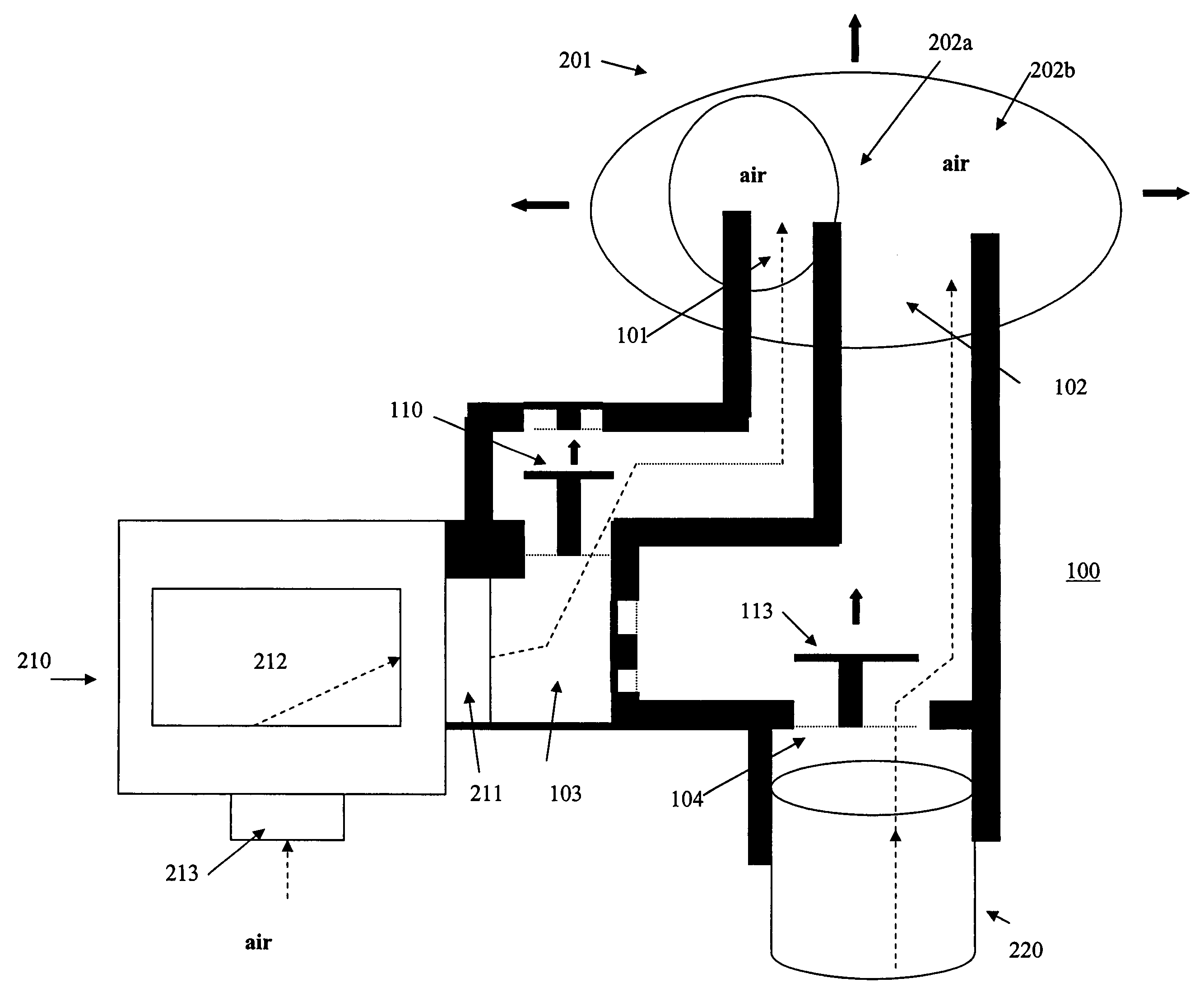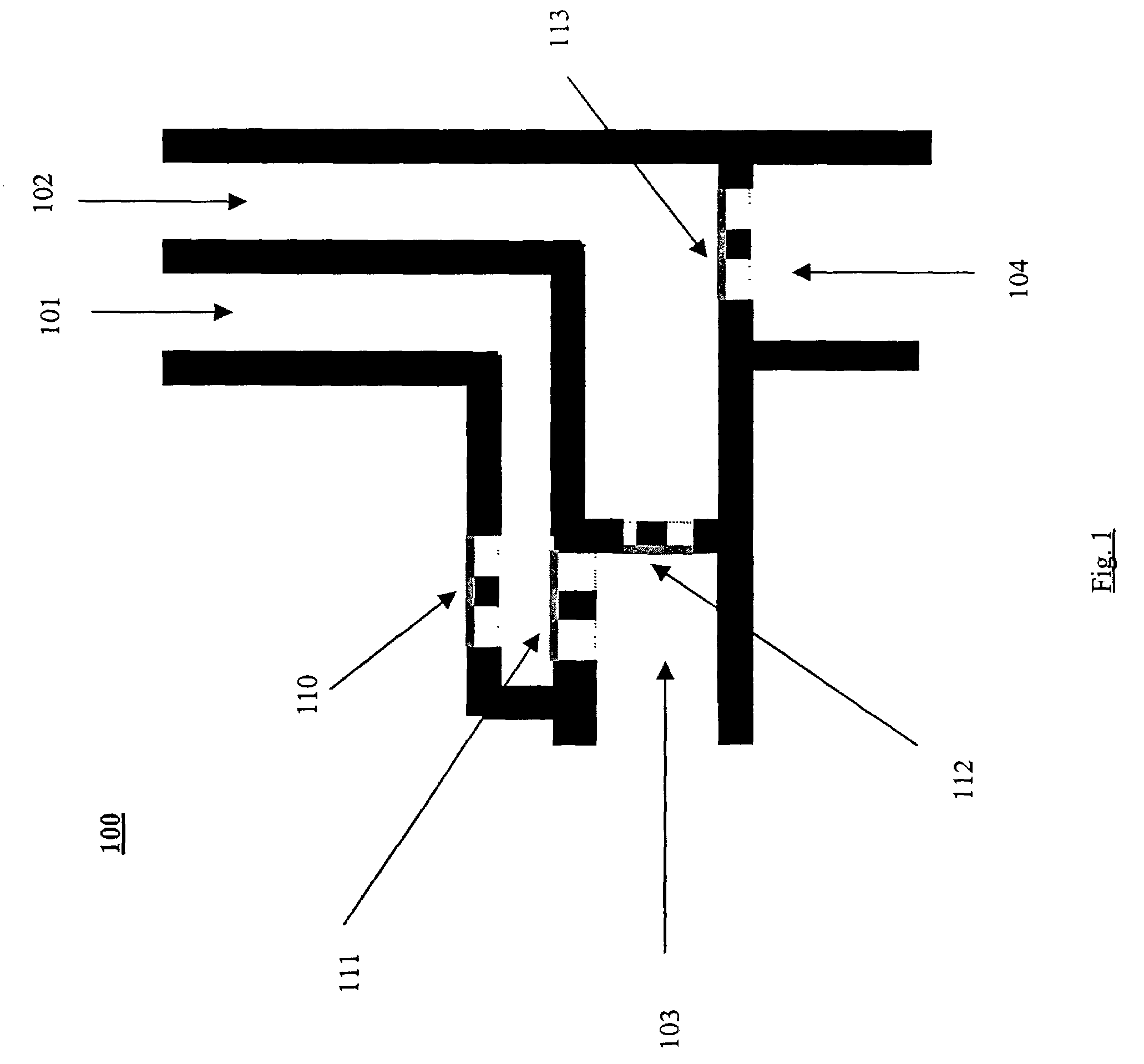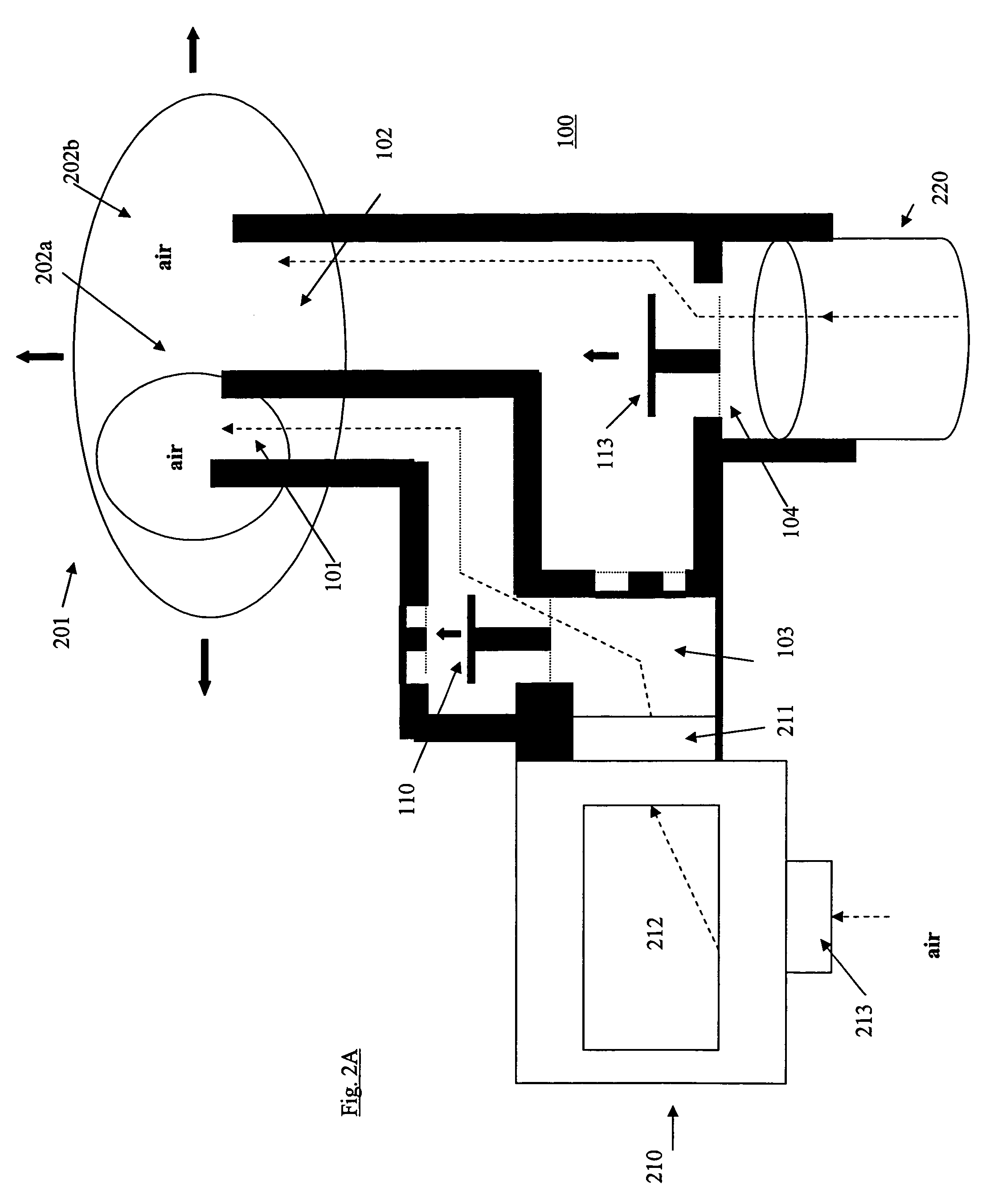Intubation tube placement assessment device
a technology for assessing devices and intubation tubes, which is applied in the direction of medical devices, respiratory apparatus, other medical devices, etc., can solve the problems of inadvertent esophageal intubation, inability to accurately detect the position of the ett in the patient, and inability to perform inadvertent intubation, etc., to achieve the effect of improving specificity, sensitivity and quick discernmen
- Summary
- Abstract
- Description
- Claims
- Application Information
AI Technical Summary
Benefits of technology
Problems solved by technology
Method used
Image
Examples
Embodiment Construction
[0015]FIG. 1 shows a novel device, generally represented at 100, used to connect both a CO2 detection device and a volume displacement detector in line with an ETT. In a preferred embodiment the device comprises first 101 and second 102 volume displacement detector portals, a CO2 detector portal 103 and an endotracheal tube portal 104. The portals 101, 102, 103 and 104 are configured to connect with other appropriate devices via slip fittings, friction fittings, threaded fittings, or similar detachable fittings. The device comprises first 111 and second 113 positive pressure response valves which open when positive pressure is applied to the device 100 (see FIGS. 2B and 3B). First 110 and second 112 negative response valves are also incorporated into the device 100 and configured such that they open when negative pressure is applied to the device 100. (see FIGS. 3A and 3B) Preferably, the device is manufactured from inexpensive material such that it may be disposed of following use....
PUM
 Login to View More
Login to View More Abstract
Description
Claims
Application Information
 Login to View More
Login to View More - R&D
- Intellectual Property
- Life Sciences
- Materials
- Tech Scout
- Unparalleled Data Quality
- Higher Quality Content
- 60% Fewer Hallucinations
Browse by: Latest US Patents, China's latest patents, Technical Efficacy Thesaurus, Application Domain, Technology Topic, Popular Technical Reports.
© 2025 PatSnap. All rights reserved.Legal|Privacy policy|Modern Slavery Act Transparency Statement|Sitemap|About US| Contact US: help@patsnap.com



